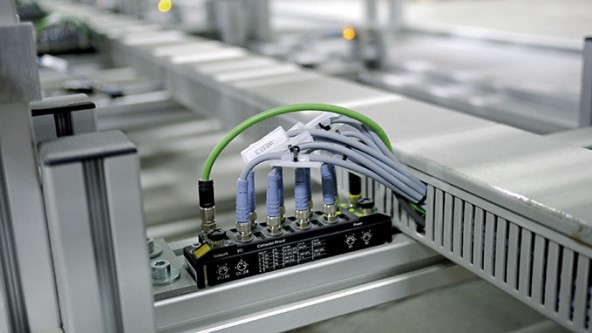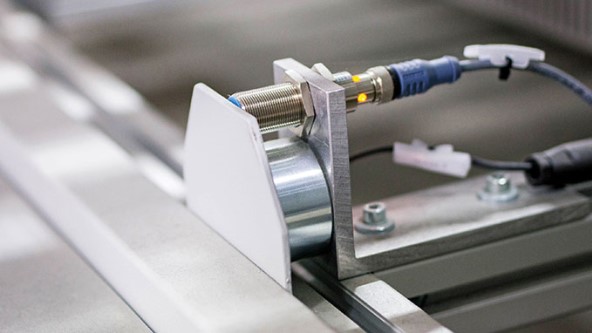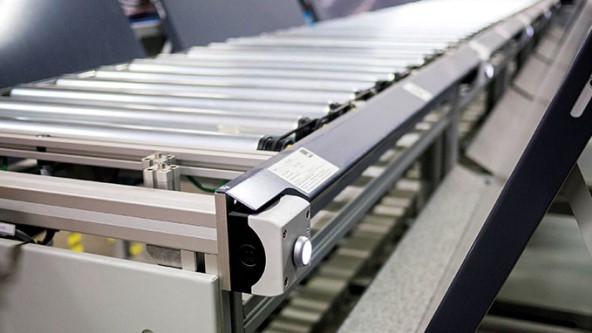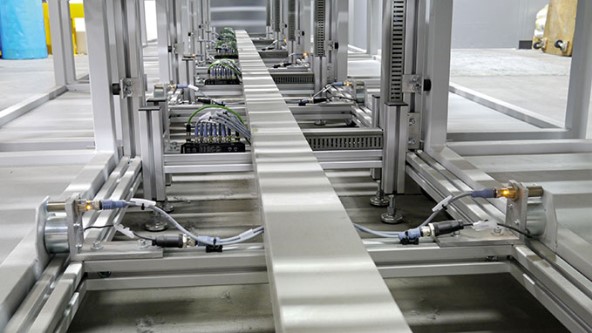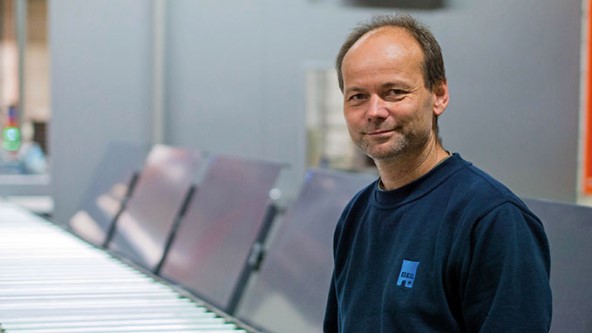TBEN-S Modul in a Punch Bender for Print Shops
Beil uses the TBEN-S compact Profinet I/O modules directly on 40 millimeter aluminum profiles in a punch bender for print shops
Machines in the printing industry have many interfaces to the office world. Plate setters, punch benders and the actual printing machine must be networked together and connected to the system of the print shop. Barcode scanners and monitors also have to be connected. Ethernet solutions simplify this through the use of the common TCP/IP platform. Beil Registersysteme GmbH therefore also uses Ethernet solutions in its machines for the printing industry. To connect sensors and actuators, Turck's ultra compact TBEN-S I/O modules are used in a Belgian print shop. The wiring in the machine as well as the integration in the controller environment couldn't be simpler.
The punch benders, as well as the turning unit and stacker for a specific process in the offset printing, frequently come from Beil Registersysteme GmbH, based in Abensberg, Bavaria. The company is one of the few full-range suppliers worldwide for punching and bending printing plates in all segments of the printing industry.
Ethernet simplifies data transfer
Beil produced a punch bender together with a rotating table and stacker for a Belgian print shop near Antwerp. The data transfer between the different machines involved in the printing process is now implemented with Industrial Ethernet and is considerably easier and more economical to set up than with conventional fieldbuses.
After bending, the printing plates are identified by their data matrix code and transported to the Beil stacker. In the Belgian plant, the plates are already punched in the CTP machine. The stacker is equipped with vacuum grippers in order to set up the plates carefully. After receiving 100 to 120 plates a cart is filled, and this is indicated to the operator by a light and acoustic signal. The cart can be released via a signal actuator. A control slip is printed at the same time in order to identify the plates stored on the cart.
To anchor the carts on the stacker, electromagnets are fitted which can be locked or released via the pushbutton actuator. An inductive sensor detects whether a cart is positioned correctly. If an emptied cart is positioned in front of the sensor, the light button flashes and the cart can be locked again for renewed filling. Two carts are positioned opposite the stacker to form a module, and the print shop in Belgium has a total of five modules.
Reduced wiring effort
Instead of the conventional point-to-point wiring, Beil used Turck’s TBEN-S-I/O modules with IP67 protection. The Profinet modules collect the signals directly on the stacker and bring them to the box PC controller in the control cabinet. The TBEN-S modules are connected up in a linear topology.
Ethernet address and web server on board
The TBEN-S modules have a very compact design and, thanks to their width of only 32 millimeters, could be mounted directly on the 40 mm profiles of the module carts. An even more noteworthy feature of the compact design is that themodules do not require a sub-bus with an additional Profinet coupler. Each module is an autonomous Profinet station with its own Ethernet address. A web server and two Ethernet ports for linear topology are also on board.
- Topics & Technologies


